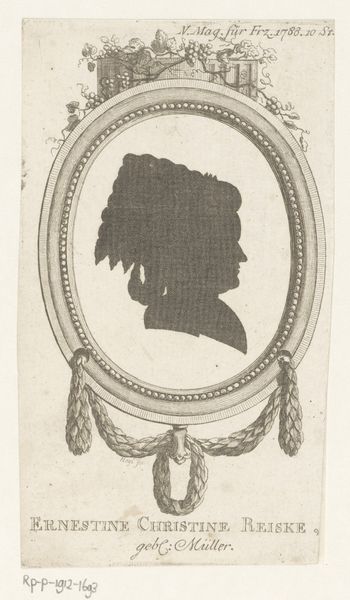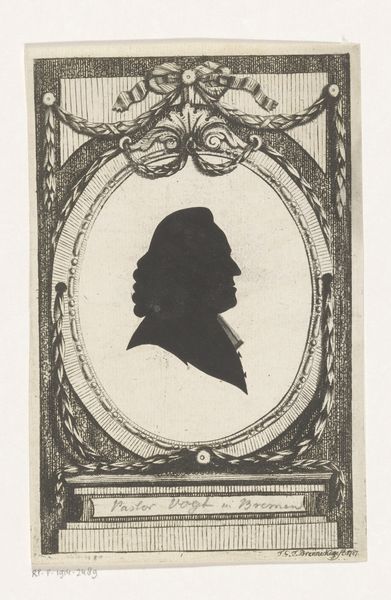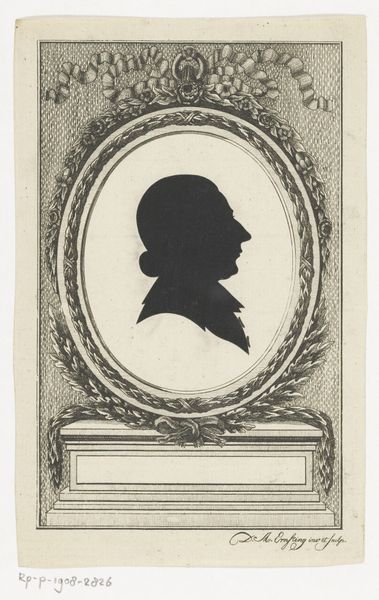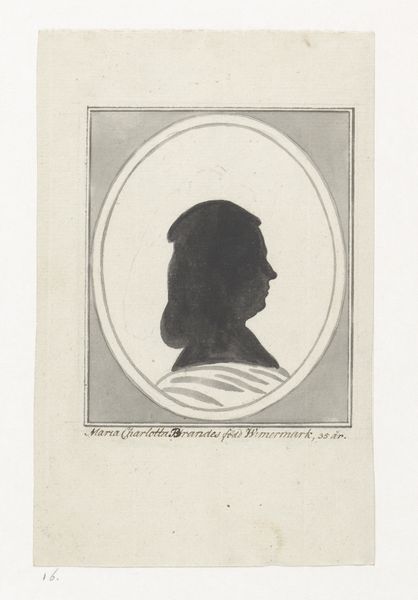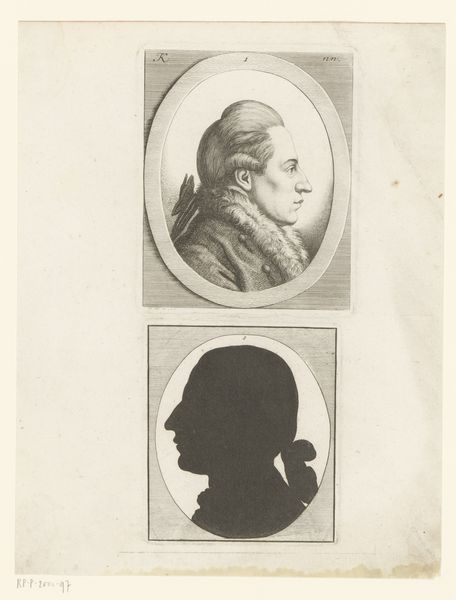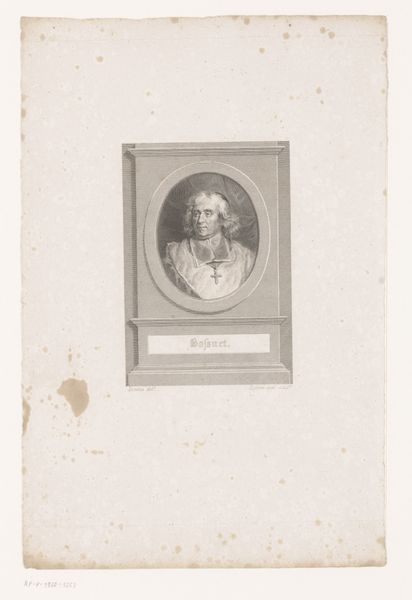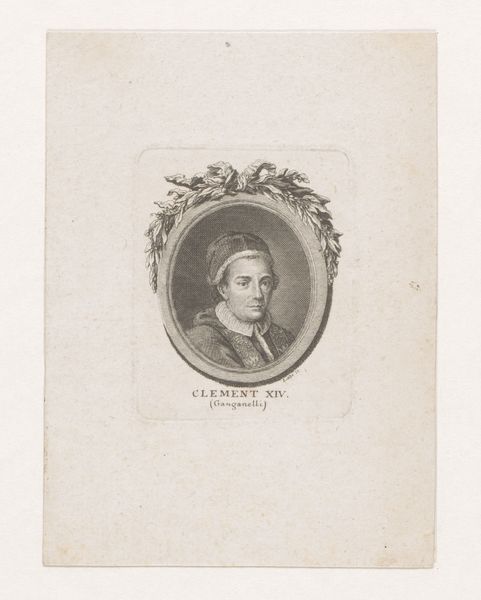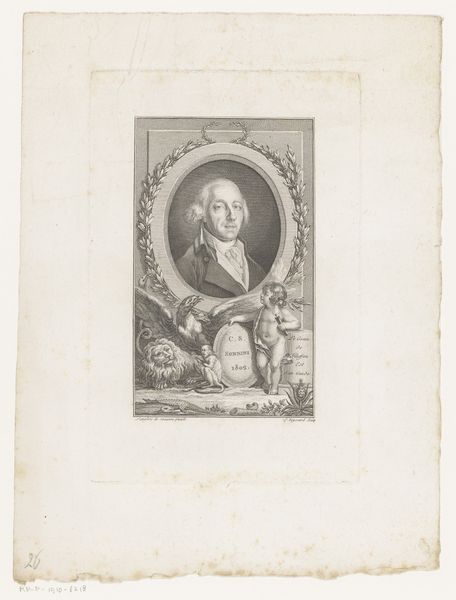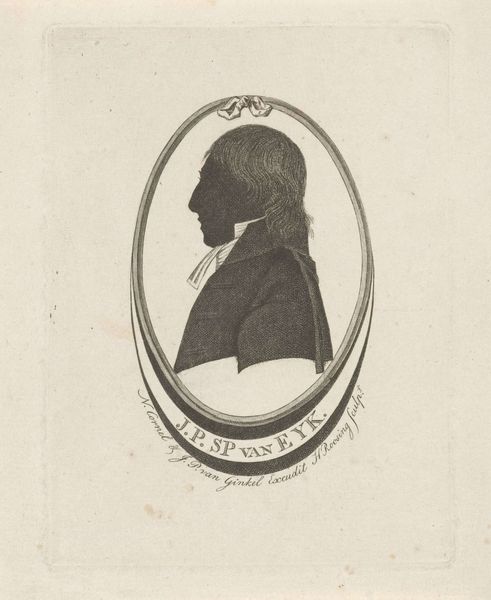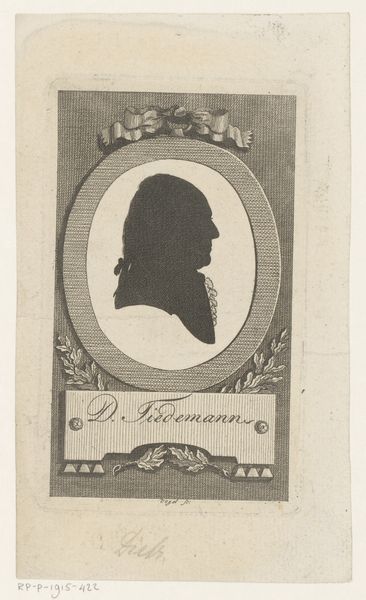
print, etching, intaglio
#
portrait
#
neoclassicism
# print
#
etching
#
intaglio
Dimensions: height 102 mm, width 82 mm
Copyright: Rijks Museum: Open Domain
Editor: Here we have a portrait, etched onto what looks like paper, titled "Silhouetportret van Georg Gottlob Ansfeldt." It was created sometime between 1750 and 1811 by Georg Christoph Schmidt. I find the starkness of the silhouette fascinating. How do you interpret this work within its historical context? Curator: It's striking, isn't it? This piece emerges from the Neoclassical period, but beyond its stylistic qualities, the silhouette itself is deeply tied to notions of identity and social class. Silhouettes offered a more affordable way for the burgeoning middle class to participate in portraiture, thus subtly challenging aristocratic norms around representation and access. The frame and bow are conventional class signifiers though. Who got to be seen, and how they were seen, were intensely political questions. Editor: So, even a seemingly simple portrait like this engages with class dynamics? Curator: Absolutely. Consider also the gendered dimension. While men held considerable social and political power during the period, women's access to public life and self-representation were often restricted. How might this portrait function differently if the sitter was a woman? The choices surrounding representation – even in this relatively democratized form – remained constrained by gender norms and expectations. Editor: That makes me think about the gaze and who controls it. Curator: Precisely! Whose gaze is privileged and who gets to gaze back? Looking closely at this etching forces us to confront the unspoken rules that governed visibility and representation. Editor: I hadn't considered all of those layers within what seems like a straightforward image. I'll never look at a silhouette the same way again! Curator: That's the power of art! It invites us to excavate the histories and social forces that shape our understanding of the world.
Comments
No comments
Be the first to comment and join the conversation on the ultimate creative platform.
